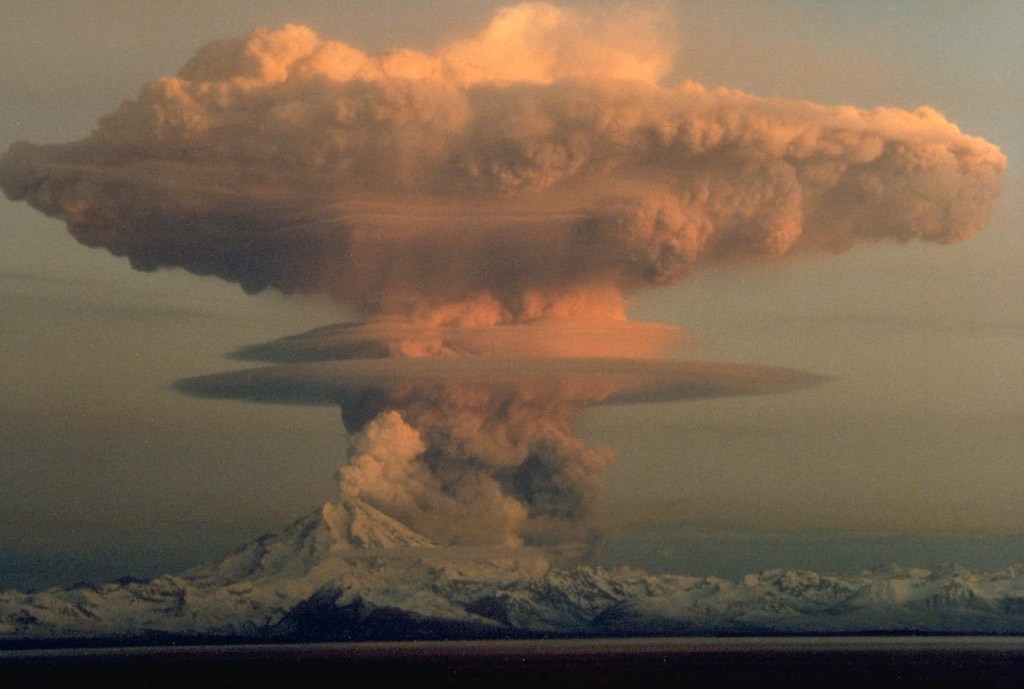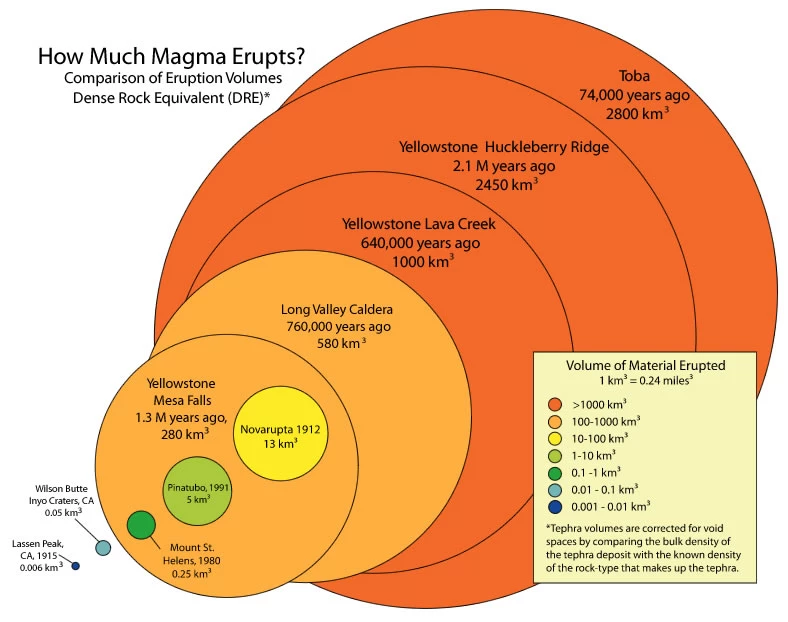
USGS photo by R.J. Clucas, public domain.
Introduction
Volcanic eruptions can range from the emission of gases to quiet eruptions of lava flows that can be safely observed to powerful eruptions that can blow apart mountains and devastate many square miles like what occurred during the 1980 eruption of Mount St. Helens.
Although the St. Helens eruption is the largest to have taken place in the United States in more than 100 years, it is not even close to being the largest historic eruption in North America. The 1912 eruption of Novarupta in Katmai NP and Preserve was about 30 times larger than St. Helens based on the volume of magma emitted.
Volume of Erupted Magma

Public domain image via USGS.

The 1912 eruption of Novarupta in Katmai NP and Preserve was about 30 times larger than St. Helens based on the volume of magma emitted.
"Yet the Novarupta eruption is itself small compared to the largest eruption at Yellowstone (2.1 million years ago). The Yellowstone Huckleberry Ridge eruption emitted 590 cubic miles (2,450 cubic kilometers of magma—approximately 10,000 times of what St. Helens erupted.
VEI Table
The Volcanic Explosivity Index (VEI) is a scale that describes the size of explosive volcanic eruptions based on magnitude and intensity. The numerical scale (from 0 to 8) is a logarithmic scale, and is generally analogous to the Richter and other magnitude scales for the size of earthquakes.
| VEI | Ejecta Volume km3 (mi3) | Column Height km (mi) | Classification | Description | Volcano Types | Examples |
|---|
Information in the VEI Table
-
Each interval on the VEI (from 0 to 8) represents a ten-fold increase in the size of an eruption (except for events at the bottom of the scale). Effusive Hawaiian-style eruptions are rated 0 on the index, with supervolcano eruptions such as at Yellowstone at 8.
-
The scale is based on the volume of magma erupted (magnitude) and the eruption column height of explosive eruptions.
-
The height of the eruption column correlates with eruption intensity, or the rate of the eruption.
-
The index also provides a unique one-word qualitative description for each value, and includes the traditional classification of eruptions based on characteristics of classic eruptions.
-
The scale is not useful for effusive eruptions of lava as it is based volume of tephra erupted and eruption column height.
Last updated: August 5, 2022
